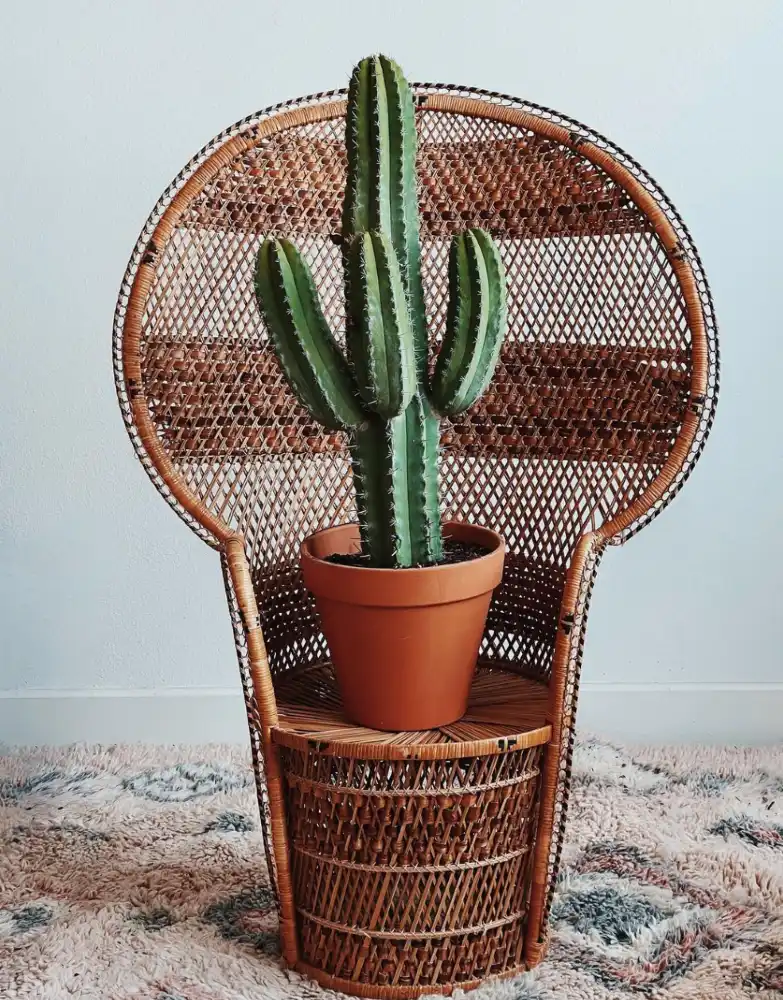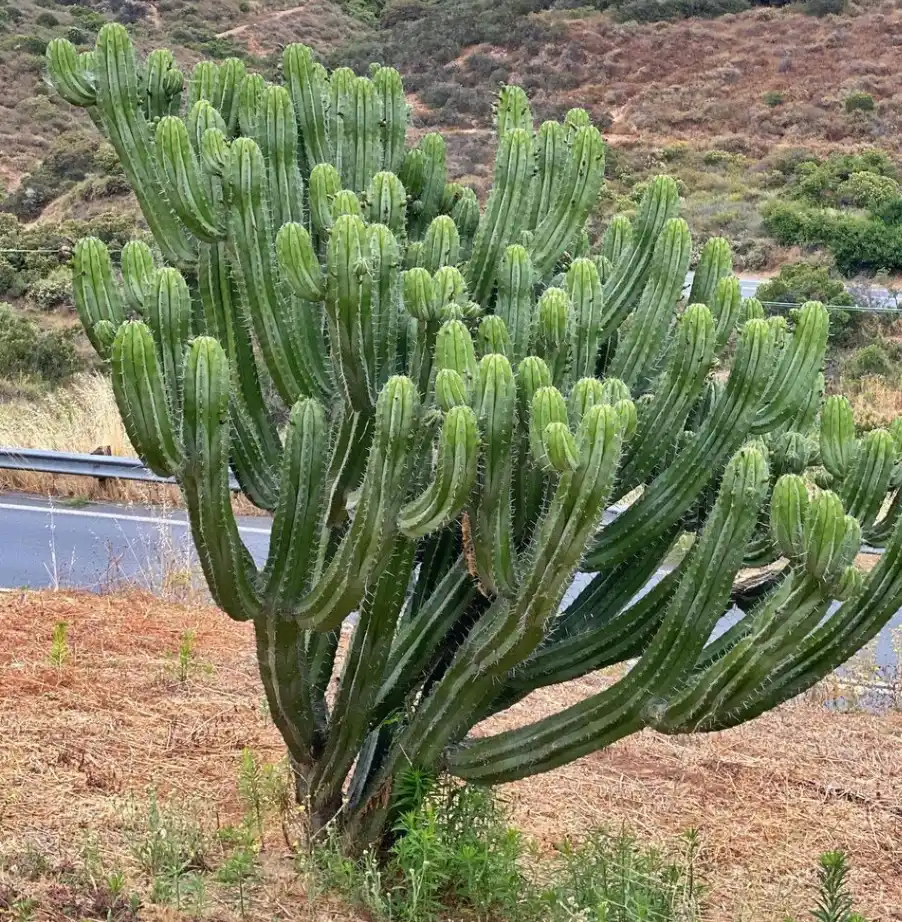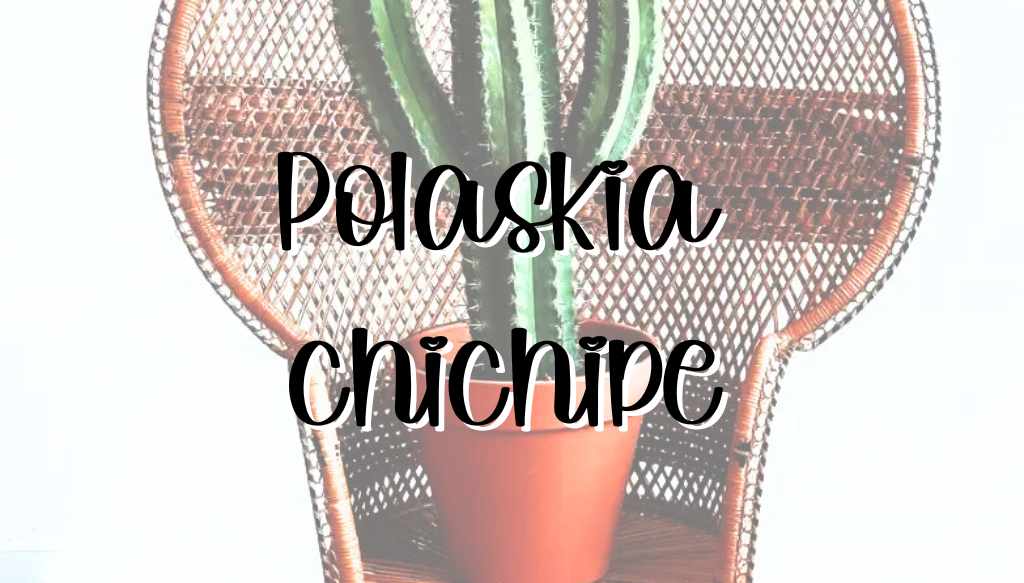Polaskia chichipe is a unique and eye-catching succulent that’s perfect for anyone looking to add a touch of beauty and intrigue to their indoor or outdoor garden. In this comprehensive guide, we’ll cover everything you need to know about Polaskia chichipe’s natural habitat, appearance, care, and unique adaptations. So, whether you’re a succulent beginner or a seasoned hobbyist, this article will provide you with all the information you need to grow a thriving Polaskia chichipe.
Dig in!
Natural Habitat and Other Names
Polaskia chichipe is native to Mexico, particularly the states of Puebla and Oaxaca. It thrives in semi-arid, rocky areas at elevations of up to 5,000 feet. This resilient succulent is also commonly known as Chichipe or Chende.

Unique Adaptations and Appearance
Adaptations
Polaskia chichipe is well-adapted to survive in its arid native habitat. Its thick, fleshy stems store water, allowing the plant to withstand periods of drought. The plant’s waxy, bluish-green color helps reflect sunlight and prevent water loss through transpiration.
Appearance and Size
Polaskia chichipe is a columnar cactus that features tall, upright stems covered in sharp spines. The stems can grow up to 15 feet tall and 3-4 inches in diameter. The plant’s greyish-blue stems contrast beautifully with its vibrant pink or yellow flowers, which typically bloom in late spring or early summer.

Growth Rate, Season, and Blooming
Growth Rate and Season
The growth rate is relatively slow, with the plant reaching its full height over several years. It primarily grows during the warmer months, from late spring to early fall.
Blooming
Polaskia chichipe produces stunning pink or yellow flowers that generally appear from May to June. The flowers are triggered to bloom by a combination of increased daylight hours and warmer temperatures.
Light Requirements and Cold Hardiness
Light Needs
Polaskia chichipe requires plenty of bright, indirect sunlight to thrive. Ideally, it should receive at least 6-8 hours of sunlight daily. However, it’s essential to protect the plant from intense, direct sunlight, which can scorch its delicate stems.
Cold Hardiness
This succulent is cold hardy down to around 20°F (-6.7°C). If you live in a region with harsh winters, it’s best to grow Polaskia chichipe in a pot that can be moved indoors or to a protected area during the coldest months.
Proper Care and Watering
Caring for Polaskia chichipe
To care for your Polaskia chichipe, plant it in well-draining soil, such as a mix of 70% cactus soil and 30% perlite. Make sure you use a pot with drainage holes to prevent waterlogging.
Watering Frequency
Polaskia chichipe needs a “drench and dry” watering method. Thoroughly water the plant until water drains from the bottom of the pot, then allow the soil to dry out completely before watering again. During the growing season, you may need to water every 7-10 days, while in winter, it should be watered sparingly, if at all.
Fertilizing and Propagation
Fertilizing Polaskia chichipe
Feed your Polaskia chichipe with a very diluted, balanced, liquid fertilizer every 4-6 weeks during the growing season. Avoid fertilizing during the winter months when the plant is dormant.

Succulent fertilizer available to purchase on Etsy.
Propagation Methods
Polaskia chichipe can be propagated by taking stem cuttings. To do this, remove a healthy stem segment, allow it to callus over for a few days, and then plant it in well-draining soil.
Common Problems and Pest Control
Common Issues
The most common problems faced by Polaskia chichipe growers include root rot due to overwatering, sunburn, and pest infestations.
Pest Management
Polaskia chichipe can be susceptible to pests like mealybugs, scale insects, and spider mites. Regularly inspect your plant for signs of infestation and treat promptly with insecticidal soap or an appropriate pesticide.
Fix the pest problem on your succulents and cacti with these popular insecticides.
Growing Indoors and Toxicity
Indoor Growing
Polaskia chichipe can be grown indoors, provided it receives ample sunlight. Place it near a bright, sunny window, but be sure to protect it from harsh, direct sunlight.
Toxicity
There is limited information available on Polaskia chichipe’s toxicity. However, many succulents and cacti can be harmful to pets and humans if ingested. It’s best to err on the side of caution and keep this plant out of reach of pets and children.
Dormancy and Etymology
Identifying Dormancy
Polaskia chichipe enters a dormant period during the colder winter months. During this time, its growth slows down, and it requires less water. To keep your plant healthy, reduce watering frequency and avoid fertilizing during dormancy.
Culinary Uses
Polaskia chichipe is prized in central Mexico for multiple reasons. Firstly, it produces edible red fruits called chichituna that are enjoyed as food. Secondly, its branches can be used as a source of firewood. It is currently being selectively bred to enhance desirable characteristics. Growers are aiming to develop plants that produce bigger and sweeter fruits, as well as plants that fruit for longer periods of time. Cultivated plants that can self-pollinate are especially appealing to growers because they produce fruit more readily.
When you’re rooting or transplanting your succulents and cacti, use SUPERthrive to help reduce the chance of transplant shock and grow a strong root system.
Polaskia chichipe is a captivating succulent that can bring a touch of natural beauty to your home or garden. With proper care, plenty of sunlight, and the right growing conditions, you can enjoy this stunning plant for years to come. Happy growing!

